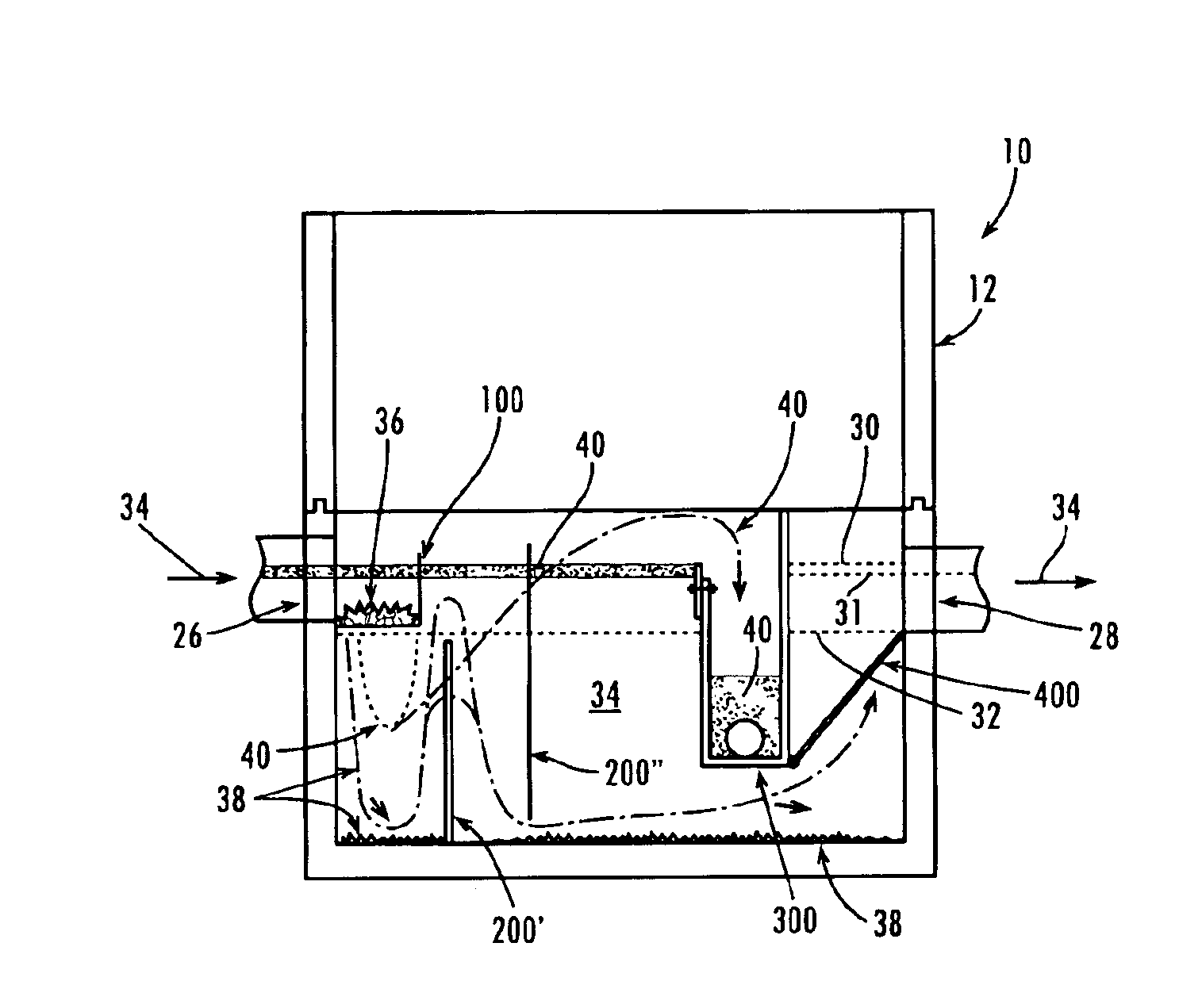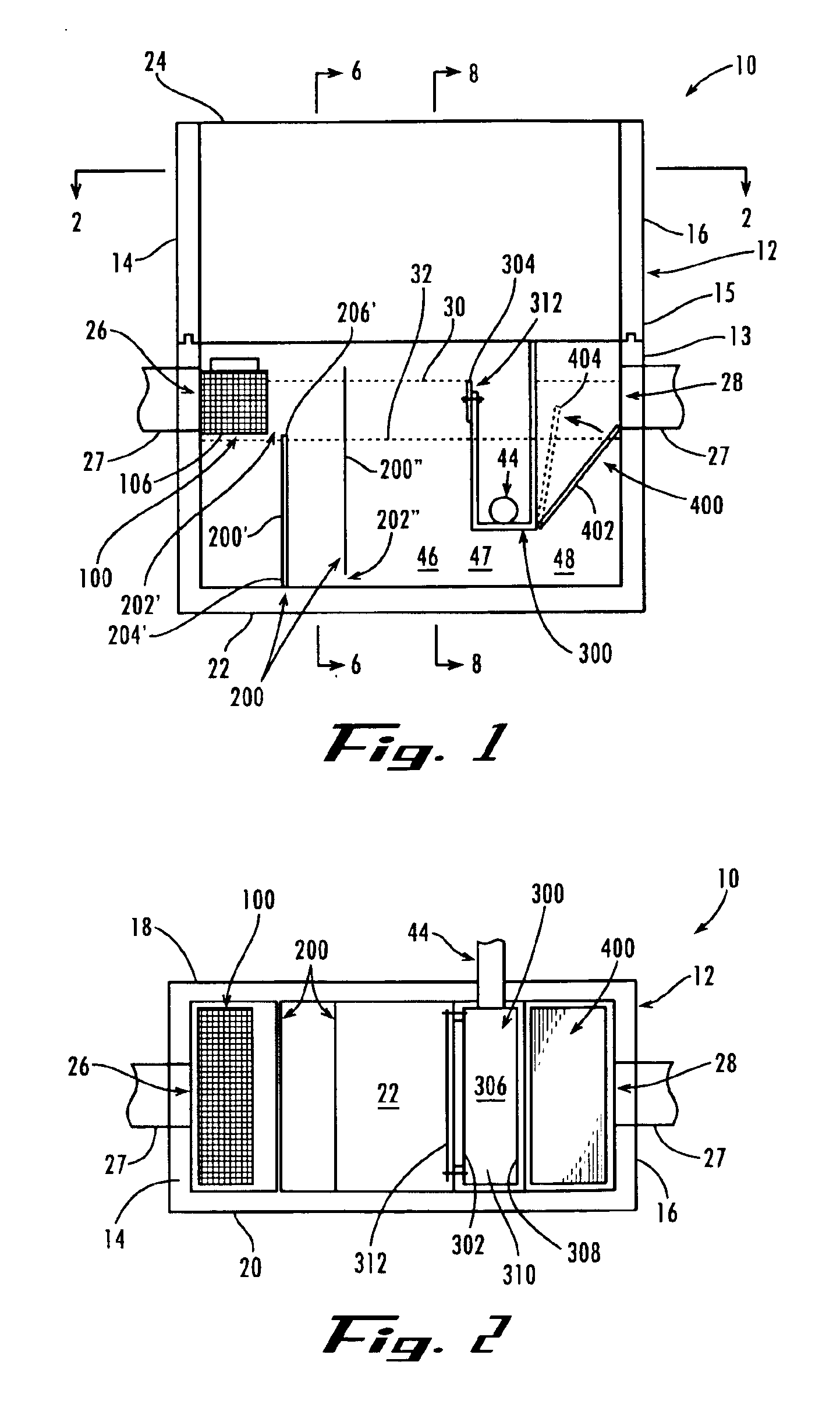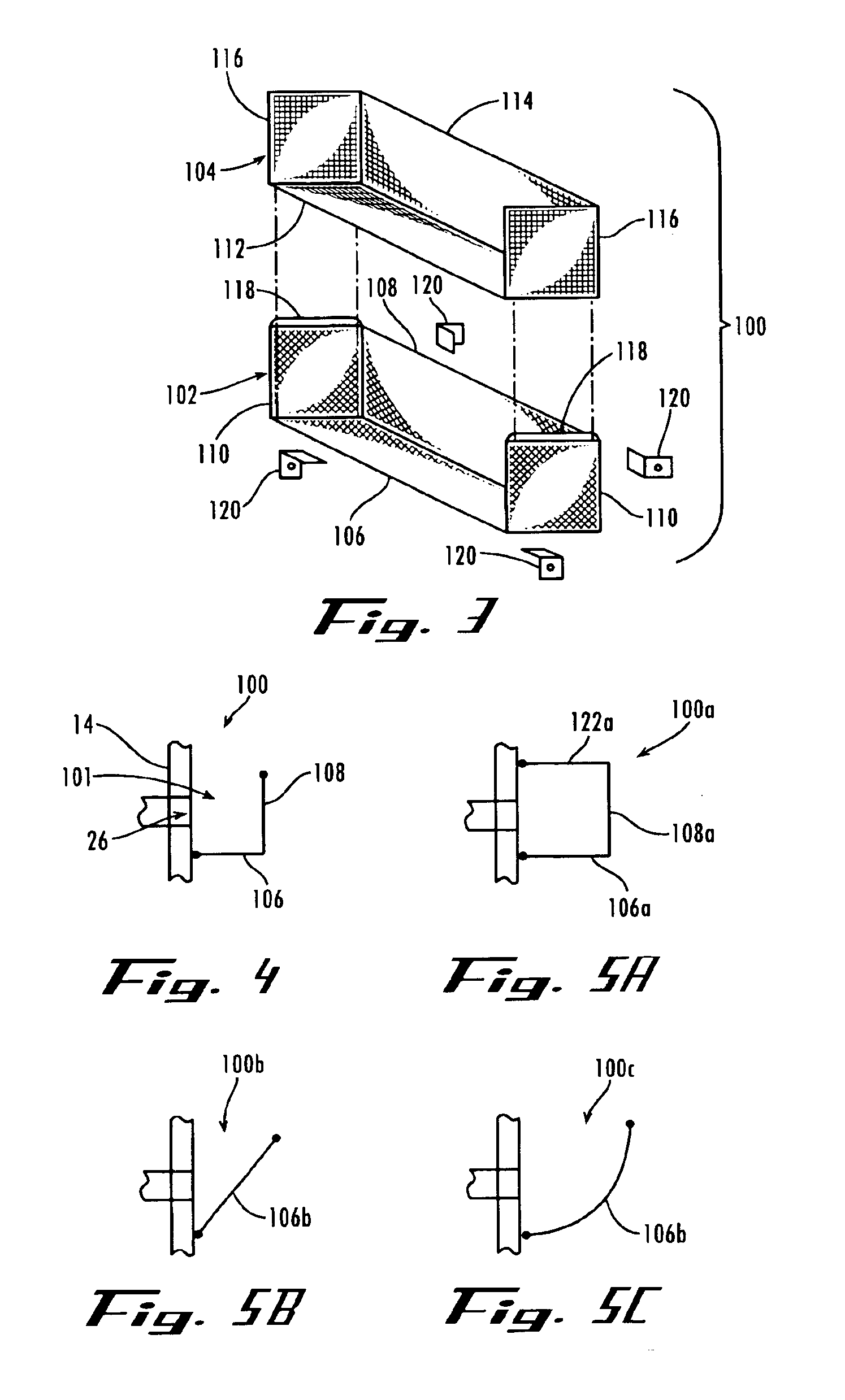Water pollution trap with inlet basket
a water pollution and inlet basket technology, applied in the field of oil/grit separators, can solve the problems of affecting the performance reducing the service life of the water filter, so as to increase the water residence time, increase the service life, and encourage the settling of particulate matter
- Summary
- Abstract
- Description
- Claims
- Application Information
AI Technical Summary
Benefits of technology
Problems solved by technology
Method used
Image
Examples
Embodiment Construction
[0055]Referring now to the drawing figures, wherein like reference numerals represent like parts throughout the several views, the pollution trap of the present invention provides for separating pollutants from storm-water runoff and retaining the pollutants in the trap or a nearby storage container. The pollution trap is well suited for filtering pollutants including floatable matter such as motor oil, other hydrocarbons, and detergents, particulate matter such as sand, dirt, and grit, and / or miscellaneous debris such as vegetative matter from trees, shrubberies, etc., paper and plastic trash, aluminum foil wrappers, foam cups, and so forth. In addition, a person of ordinary skill in the art could adapt the pollution trap described herein in order to separate other types of pollution or other types of matter from liquids other than storm water, if so desired.
[0056]The pollution trap of the present invention includes a screen for separating the miscellaneous debris pollutants from t...
PUM
| Property | Measurement | Unit |
|---|---|---|
| vertical exit velocity | aaaaa | aaaaa |
| width | aaaaa | aaaaa |
| diameter | aaaaa | aaaaa |
Abstract
Description
Claims
Application Information
 Login to View More
Login to View More - R&D
- Intellectual Property
- Life Sciences
- Materials
- Tech Scout
- Unparalleled Data Quality
- Higher Quality Content
- 60% Fewer Hallucinations
Browse by: Latest US Patents, China's latest patents, Technical Efficacy Thesaurus, Application Domain, Technology Topic, Popular Technical Reports.
© 2025 PatSnap. All rights reserved.Legal|Privacy policy|Modern Slavery Act Transparency Statement|Sitemap|About US| Contact US: help@patsnap.com



